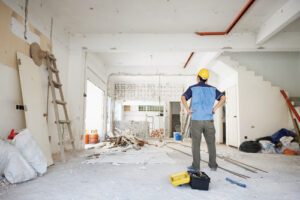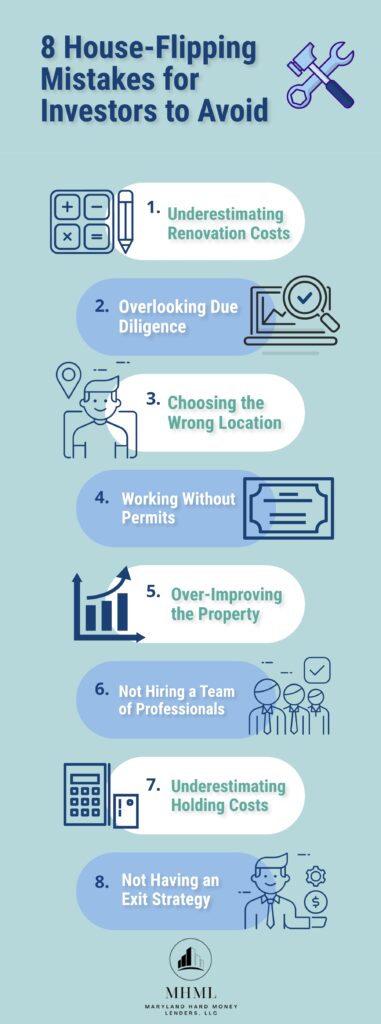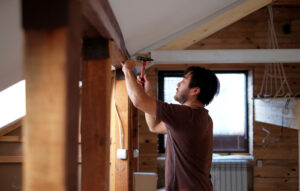8 House-Flipping Mistakes for Investors to Avoid
 Flipping homes can be a lucrative investment strategy for experienced investors who know what they’re doing. However, it can be incredibly challenging for beginners or inexperienced real estate investors. There’s plenty of room for error, so it’s important to understand where mistakes can happen and how to avoid them. Today, we’ll review the basics of house flipping, how to fund an investment, and house-flipping mistakes for investors to avoid.
Flipping homes can be a lucrative investment strategy for experienced investors who know what they’re doing. However, it can be incredibly challenging for beginners or inexperienced real estate investors. There’s plenty of room for error, so it’s important to understand where mistakes can happen and how to avoid them. Today, we’ll review the basics of house flipping, how to fund an investment, and house-flipping mistakes for investors to avoid.
Contents of This Article:
- What Is House Flipping?
- How to Fund a Fix-and-Flip
- 8 House Flipping Mistakes for Investors to Avoid
- Finance Your Fix-and-Flip With MHML
What Is House Flipping?
House flipping is a real estate investment strategy that involves purchasing a run-down property to renovate and resell it for a profit. The goal is to buy a property at a relatively low price, make improvements or renovations to increase the market value, and sell it at a higher price within a short period of time.
House flippers generally focus on properties that need cosmetic updates or major renovations to maximize their potential return on investment. That said, this strategy can be lucrative, but it also carries risks, like unexpected costs, market fluctuations, and longer-than-expected holding periods. Before we go over some house-flipping mistakes to avoid, let’s review how to fund a fix-and-flip property.
How to Fund a Fix-and-Flip
There are plenty of ways to fund a fix-and-flip property. However, many investors seek short-term financing solutions, like hard money loans, so they’re not stuck in a long-term mortgage.
 Hard money loans are short-term, nonconforming real estate loans typically provided by private lenders or investors. These loans are secured by the property being purchased and renovated rather than the borrower’s creditworthiness or financial history.
Hard money loans are short-term, nonconforming real estate loans typically provided by private lenders or investors. These loans are secured by the property being purchased and renovated rather than the borrower’s creditworthiness or financial history.
That said, fix-and-flip investors often favor hard money loans for their quick approval process and flexible lending criteria. While they typically have higher interest rates and shorter repayment terms than traditional mortgages, they provide quick access to funds without the stringent requirements of conventional financing.
Some other popular financing methods for fix-and-flip properties include private money loans, home equity loans, or business loans.
8 House-Flipping Mistakes for Investors to Avoid
Flipping homes can be an excellent way to get into real estate investing and earn significant profits in a short amount of time. However, the process isn’t always as straightforward as it seems. Here are eight house-flipping mistakes you’ll want to avoid for a successful outcome.

- Underestimating Renovation Costs
- Overlooking Due Diligence
- Choosing the Wrong Location
- Working Without Permits
- Over-Improving the Property
- Not Hiring a Team of Professionals
- Underestimating Holding Costs
- Not Having an Exit Strategy
Underestimating Renovation Costs
Flipping a property is no easy task, and one of the biggest house-flipping mistakes that even the most experienced investors can make is underestimating the costs involved. After all, the last thing you want to do is get halfway through a flip and realize you’re out of funds already.
This generally happens when investors fail to accurately assess the full scope of necessary renovations or miscalculate the costs involved. To avoid this, conducting thorough property inspections, getting multiple estimates from contractors, and making an emergency fund for unexpected expenses are crucial steps in the process.
One key tip is to create a detailed budget that accounts for every expense, both large and small. You’ll also want to work with experienced contractors who can provide accurate quotes and help you avoid costly road bumps.
Overlooking Due Diligence
Research is crucial in any real estate investment. A lack of due diligence can lead to costly house-flipping mistakes and may derail your entire fix-and-flip project. Whether you hire unqualified contractors or buy a property in a declining area, insufficient research and lack of due diligence can negatively impact your entire project.
As such, investors must conduct comprehensive inspections, review property records, research market trends, and assess potential risks before committing to a fix-and-flip project. Aside from property details, you’ll want to thoroughly research and vet the contractors or professionals you hire to help you with the project.
Choosing the Wrong Location
Location is key when it comes to real estate investing. Choosing the wrong location for your property can significantly impact the success of your fix-and-flip. After all, the location of a property substantially influences its marketability and resale value.
For instance, areas with declining property values, high crime rates, or limited amenities can make it harder to attract buyers and achieve your desired return on investment.
As such, investors need to carefully research neighborhoods, looking at factors like schools, proximity to amenities, and potential for appreciation.
Working Without Permits
While you don’t always need permits to work on certain renovation projects, if you don’t have one when one’s required, you may find yourself in legal trouble. In some cases, renovating a property without obtaining the necessary permits can result in fines, legal issues, or complications during the sale process.
That said, you’ll want to comply with local building codes and regulations and get permits for all renovations. Additionally, it’s important to ensure the work is done to code to avoid any costly setbacks throughout the process.
If you’re unsure how to obtain the right permits, consider hiring a team of licensed contractors who can take care of it for you.
Over-Improving the Property
This one may seem like a weird “mistake” to make, but it’s very possible to over-improve a fix-and-flip property. It’s important to strike a balance between making necessary renovations and over-improving the property to the point where it’s hard to recoup the costs of the improvements.
If you’re having difficulty determining which improvements are worth making, consider the expectations of potential buyers in your target market. For instance, if you’re working on a starter home, focus on more cost-effective improvements that will appeal to first-time homebuyers.
Ultimately, it’s important to keep an eye on your budget and your goals for the investment. Over-improving the property can leave you overspending and under-profiting.
 Not Hiring a Team of Professionals
Not Hiring a Team of Professionals
It’s not impossible to complete a fix-and-flip by yourself or with the help of a few friends. However, it can be a major mistake if you’re not prepared or experienced in real estate renovations.
Understandably, you may want to decrease costs by DIY-ing some renovations. However, you’re still carrying the cost of the home. So, you’ll want to balance your timeline with your budget and decide which projects you’d like to tackle and which jobs might go quicker with a professional in charge.
Additionally, some renovations require a licensed professional to be considered safe. So, having licensed electricians and plumbers to complete those renovations or repairs is crucial for a successful flip. Remember to check your local regulations to determine the licensing requirements for renovating a home.
Underestimating Holding Costs
Don’t forget that you must also pay for holding costs the entire time you’re renovating the property. Holding costs include loan payments, property taxes, insurance, utilities, and maintenance expenses.
As you can imagine, these costs, on top of renovation costs, can add up quickly, especially if you don’t sell the property as soon as expected. If you don’t factor these ongoing costs into your budget, you may eat into potential profits or cause financial strain.
Not Having an Exit Strategy
 Another one of the biggest house-flipping mistakes you can make when flipping a property is not having an exit strategy. Without a solid exit strategy, you may not sell the property right away or have to sell it at a lower price than you’d hoped for. As you can imagine, this can lead to significant financial issues and lost profits.
Another one of the biggest house-flipping mistakes you can make when flipping a property is not having an exit strategy. Without a solid exit strategy, you may not sell the property right away or have to sell it at a lower price than you’d hoped for. As you can imagine, this can lead to significant financial issues and lost profits.
One common exit strategy for fix-and-flippers is to sell the property quickly after renovations are done. Another excellent strategy is to hold onto the property and rent it out for passive income. However, if you choose this strategy, you’ll want to pay off your loan or refinance with a longer-term loan.
Ultimately, weighing the pros and cons of each strategy is crucial based on your investment goals, market conditions, and local regulations.
Finance Your Fix-and-Flip With MHML
Avoiding common house-flipping mistakes is easy when you know what to look for. However, without proper research and due diligence, you may find yourself struggling to go through with your exit strategy or stay on budget throughout the flip. Additionally, it’s important to find the right financing solution to help you fund your project efficiently.
If you’re looking for a quick, simple, short-term loan solution, look no further than Maryland Hard Money Lenders. Our team of experienced real estate loan professionals can help you get the funding you need for your next fix-and-flip project. Fill out our initial loan application today, or contact us to learn more about our lending process!



